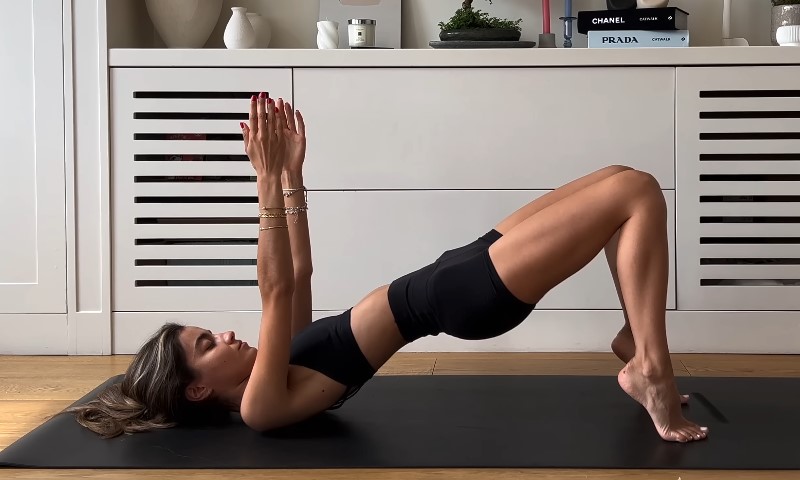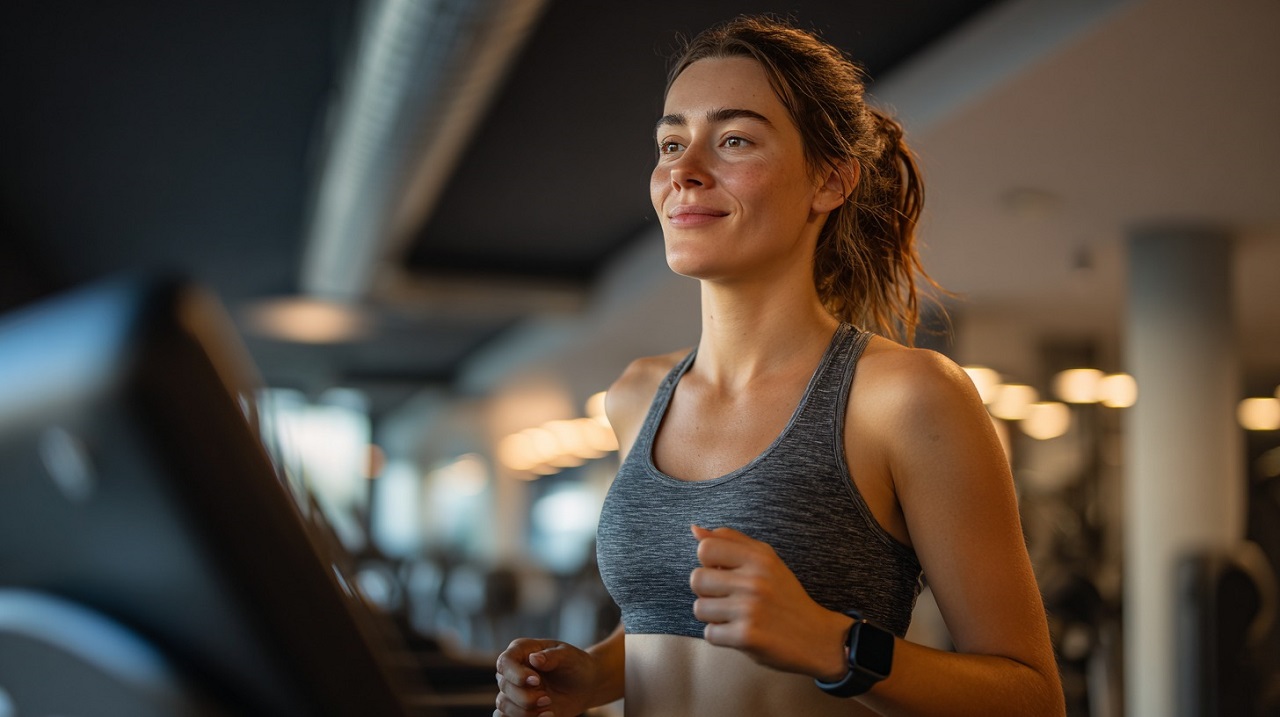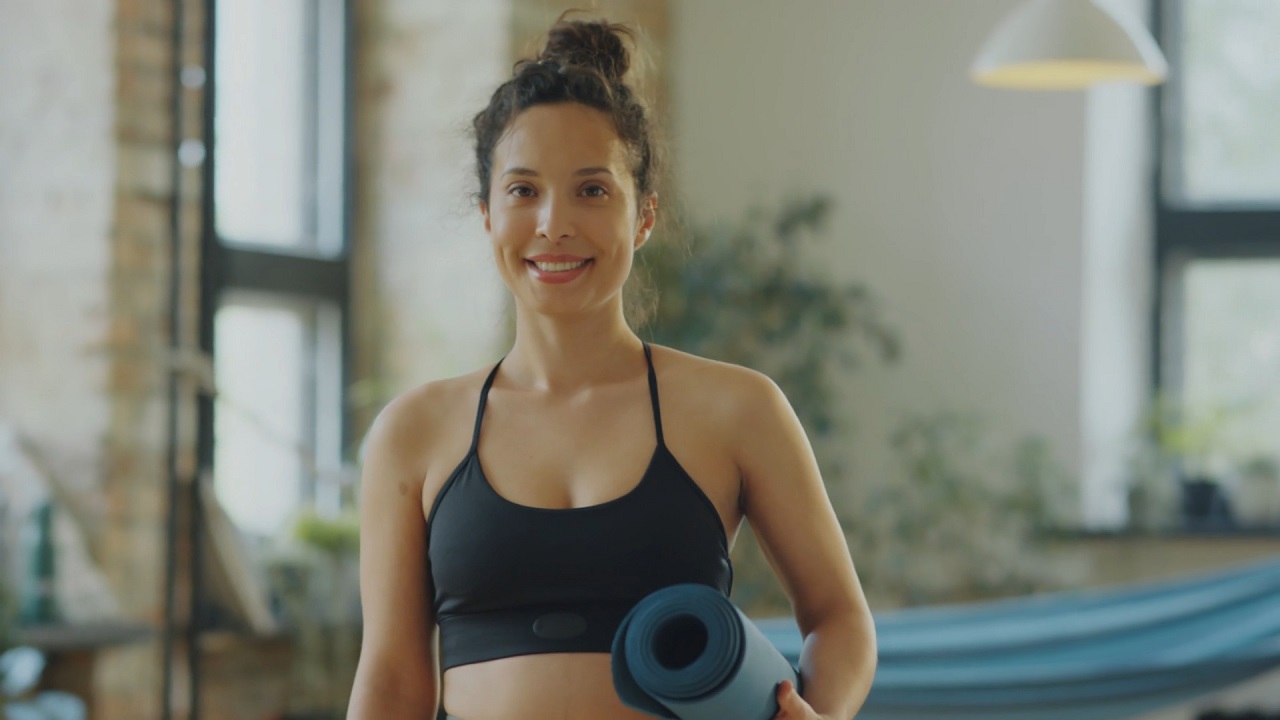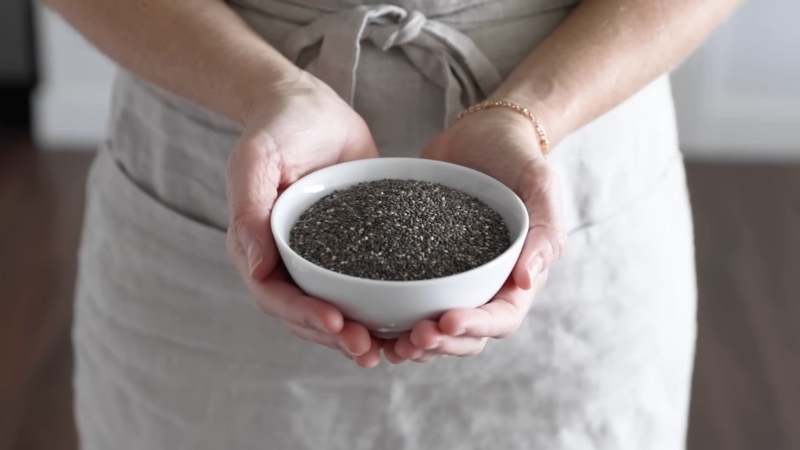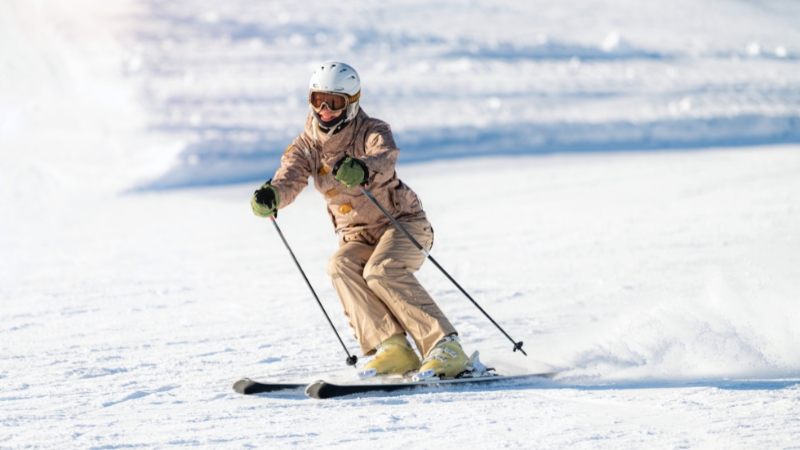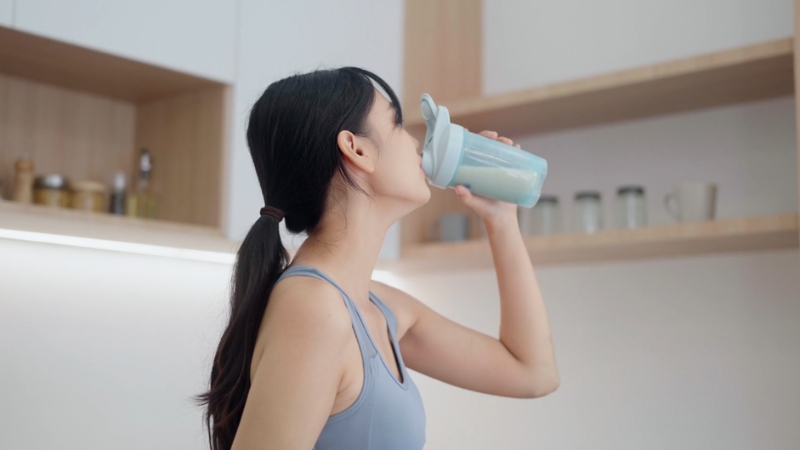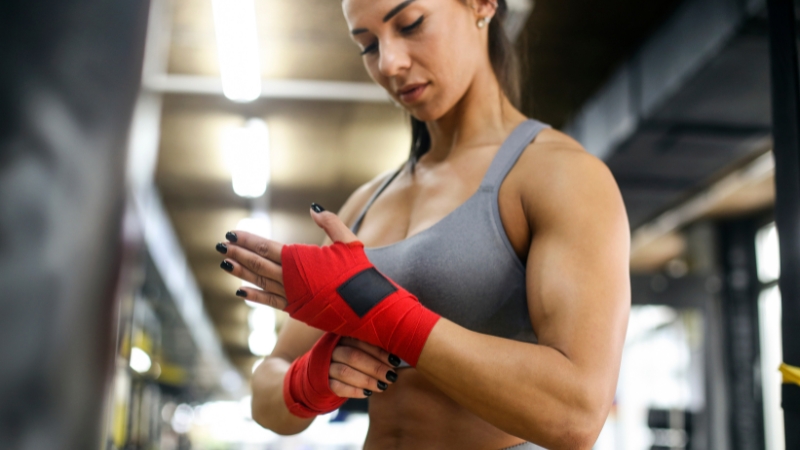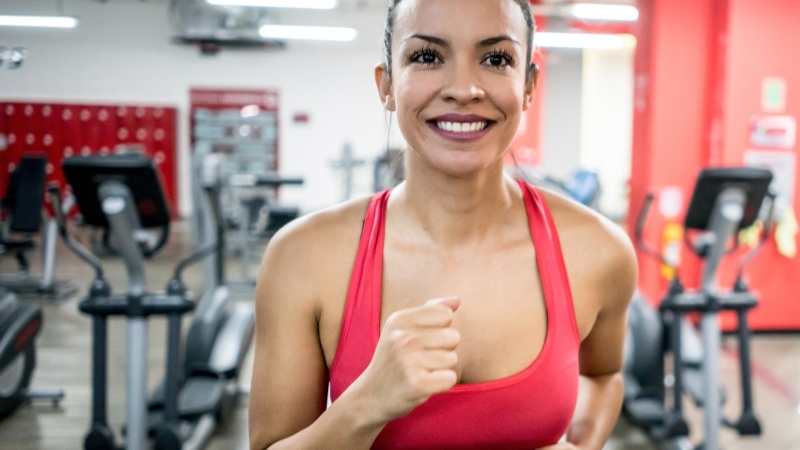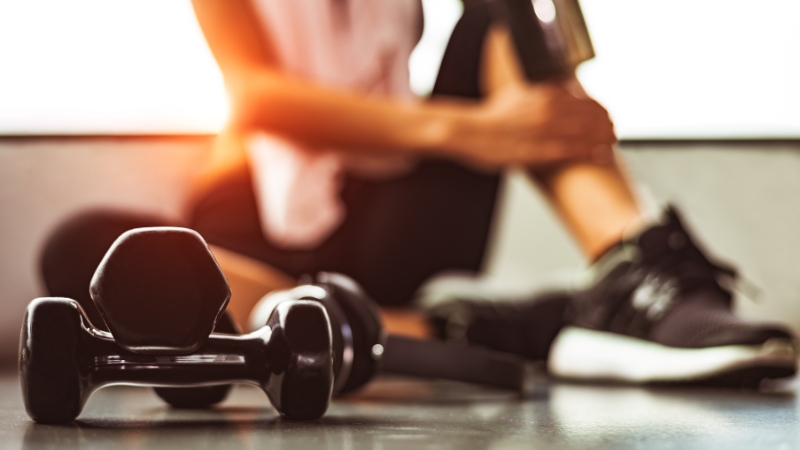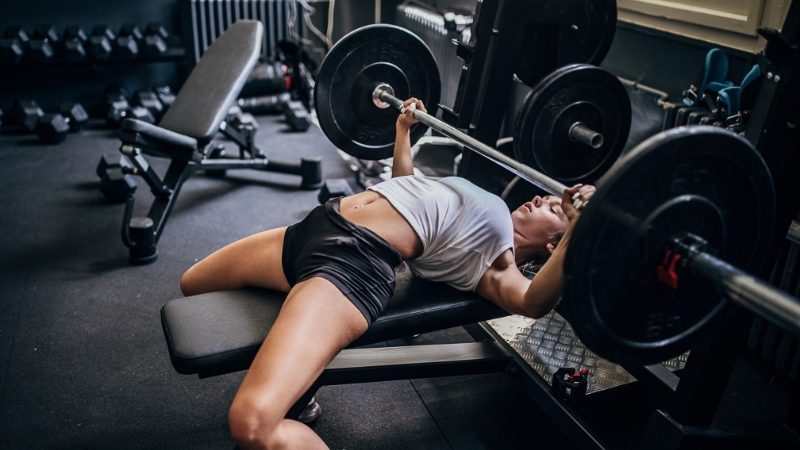
Share Post:
Weight lifting does not cause breast sagging.
On the contrary, it helps support the chest area by strengthening the muscles beneath the breasts.
Breasts are made of fat and glandular tissue, not muscle, so exercise does not affect the breast tissue directly.
However, the condition of the surrounding muscles and skin plays a key role in how the breasts appear over time.
Breast sagging (ptosis) is primarily caused by:
None of these causes is linked to weight lifting. In fact, physical inactivity and poor posture may contribute more to sagging over time than lifting weights.
Table of Contents
ToggleWhat Weight Lifting Actually Does to the Chest Area
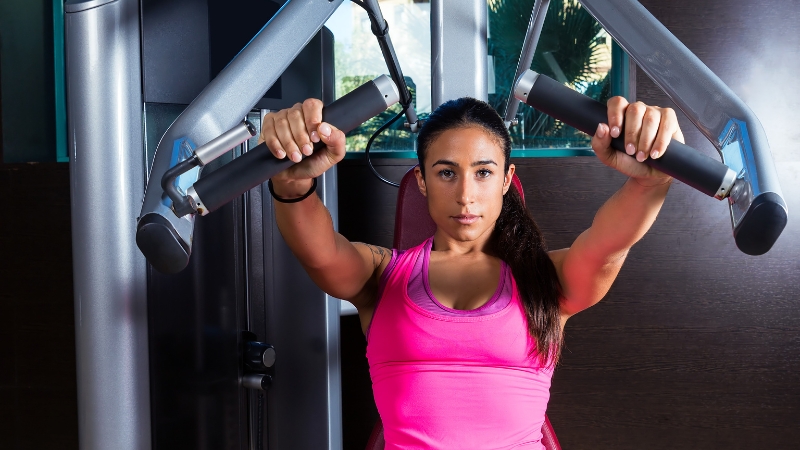
Weight lifting develops the pectoralis major and pectoralis minor muscles, which are located directly beneath the breasts. While these muscles do not connect to the breast tissue itself, they form the foundation that supports the shape of the upper torso.
When the pectorals are strengthened through consistent resistance training, the chest wall becomes firmer and more defined. This contributes to a more structured appearance under the breast tissue, which often reduces the visual impression of sagging.
As the upper chest gains muscle tone, it also helps raise the position of the ribcage slightly through improved posture. That repositioning subtly changes how the breasts sit on the chest wall.
In addition, the improved control and stability of the shoulders, scapula, and upper back all support upright alignment, which keeps the chest more elevated. A strong chest balances the musculature of the front and back of the torso, preventing the forward collapse of the shoulders that exaggerates breast sagging over time.
The most effective resistance exercises for targeting the chest include incline presses, flat bench presses, dumbbell fly movements, and controlled push-up variations. These exercises focus on muscle development across the upper and mid-chest and help create better posture, support, and shape.
When performed with proper technique and regularity, they build structural support around the breast area that is both functional and visibly impactful.
Will Weight Training Stretch or Damage Breast Tissue?
No. Weight lifting does not stretch the skin or weaken connective tissue in the breast. The movements are controlled and do not place impact stress on the ligaments that support the breast (Cooper’s ligaments). Lifting weights with proper form has no direct contact with the breast tissue itself.
Breast tissue sagging may worsen with activities that involve repetitive bouncing or impact, such as running or jumping, particularly without a supportive sports bra. But this is not the case with controlled resistance training.
In rare situations, such as after reconstructive breast surgery, some modifications may be necessary during chest training. Women with implants placed under the muscle or those recovering from post-mastectomy reconstruction are usually advised to ease into chest exercises gradually, under clinical guidance.
But once cleared, strength training still offers long-term benefits in those cases, too.
Skin Elasticity and Muscle Tone: How They Interact
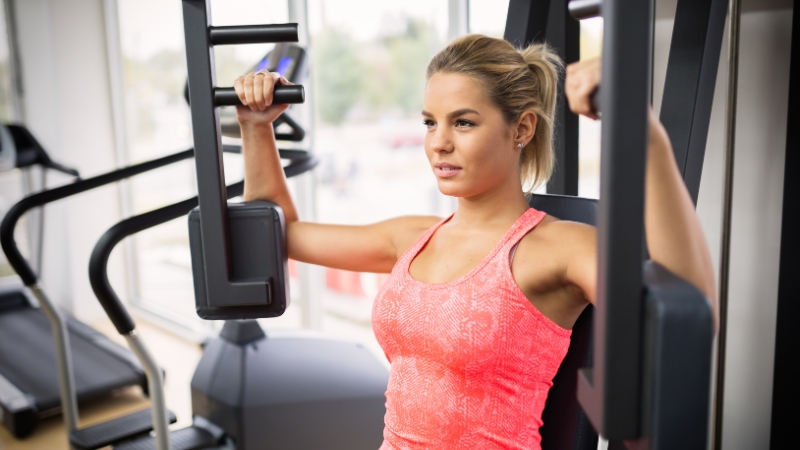
While weight training improves the structure and tone of the muscles beneath the skin, it does not alter the elasticity of the skin itself. Skin elasticity is affected by biological aging, hormonal changes, sun exposure, hydration, and genetic factors.
These determine how well the skin returns to its original position after being stretched or compressed. No amount of chest exercise can tighten the skin, but it can influence how sagging appears by changing the shape and firmness of what lies underneath.
Rapid fat loss, especially in the upper body, can lead to noticeable changes in breast volume, as the breast is partly composed of fat tissue. This can exaggerate sagging if not managed carefully.
Combining strength training with gradual fat reduction tends to result in a more stable body composition and preserves the shape of the chest. Slow weight loss allows the skin more time to adjust, and the increased muscle mass underneath the breast tissue creates better visual lift and support even when overall breast volume decreases.
The table below summarizes the key distinctions between skin elasticity and muscle tone in terms of their effect on breast appearance:
Factor
Affected by Strength Training
Biological Influence
Effect on Breast Appearance
Muscle tone
Yes
Low
Improves contour and structural support
Skin elasticity
No
High
Determines tightness and sagging
Posture
Yes
Moderate
Raises chest, improves breast position
Breast volume (fat)
Indirectly
Moderate
Affects fullness and perceived lift
As shown above, weight lifting positively influences structure and posture but cannot reverse changes to the skin. Still, many women report improved appearance due to firmer muscle tone and better body alignment.
The Role of Posture in Breast Support
One of the most consistent benefits of strength training, particularly for the chest, shoulders, and upper back, is the improvement in posture. Many people develop rounded shoulders and forward-slumping posture from prolonged sitting, screen use, or lack of upper body strength.
This postural pattern not only reduces breathing efficiency and spinal alignment but also changes the visual profile of the breasts. When the shoulders roll forward, the chest collapses inward and downward, making the breasts appear lower than they are.
Through regular training that includes scapular retraction, thoracic extension, and pectoral activation, the body gradually rebalances itself. This encourages a neutral shoulder position and a more upright torso.
A higher ribcage and stronger back muscles pull the upper chest into proper alignment, which naturally lifts the visual position of the breasts even if no actual volume change occurs. Over time, this contributes to a more confident stance, better fit of clothing, and a more athletic and firm upper body profile.
Bottom Line
@valentinaathletic Let’s talk about one of the biggest myths in fitness: training chest will make your boobs shrink. The truth? Your breast size is mostly determined by body fat and genetics, not by muscle growth. Strengthening your chest can actually give you a more lifted, defined look, improve posture, and help with overall upper body strength (e.g., to improve your push ups). If you lose body fat while training, your chest might get smaller, but that’s due to fat loss- not the exercises themselves. So don’t be afraid to bench, press, and fly- your body will only thank you for it! 💕💪🏼 ✅ My go-to chest exercises: – bench press – chest flyes . #fitness #gym #workout #fitnessmotivation #fit #motivation #bikini #training #health #travel #healthylifestyle #lifestyle #love #gymlife #gymmotivation #sport #summer #healthy #healthyfood #muscle #running #fitnessmodel #exercise #food #fitnessjourney #fashion #happy #girl #model #style ♬ Ride It – Regard
Weight lifting does not cause breast sagging. It strengthens the muscles beneath the breast tissue, improves posture, supports upper body structure, and enhances how the chest appears overall.
While it cannot change skin elasticity or increase breast volume, it significantly reduces the visual impact of sagging by building a stable foundation and correcting alignment. Whether your goal is long-term strength, better posture, or improved body composition, resistance training is a safe and effective way to support breast appearance without risk.
Related Posts:
- Is Aromatherapy Just a Myth or Does Science Support It?
- Does Losing Weight Make You Taller? Exploring the Connection
- Does Throwing Up Make You Lose Weight or Just Cause Harm?
- Does Creatine Make You Hungry? Or Could It Be…
- Does Creatine Make You Poop? What You Need to Know
- How Omega-3 Supplements Support Overall Fitness and Health



